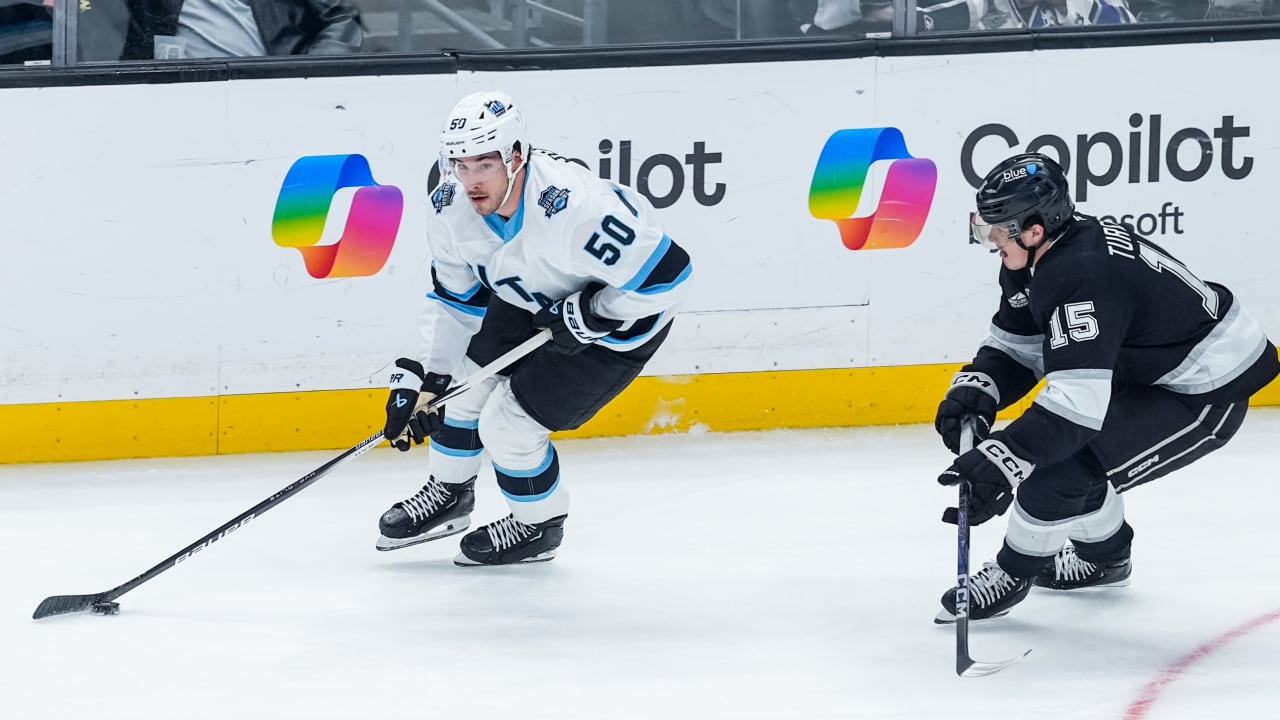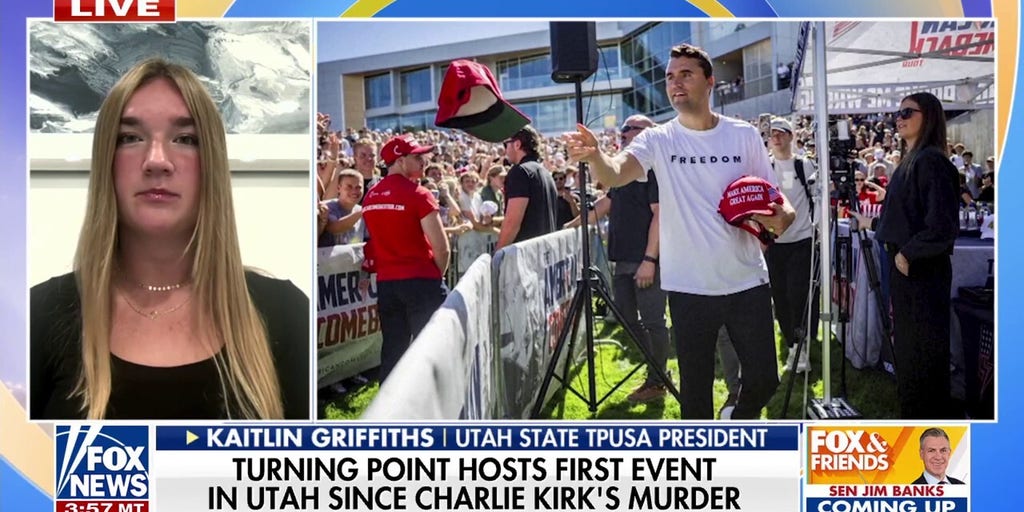The Utah college where conservative leader Charlie Kirk was assassinated lacked several key public safety measures and practices that have become standard safeguards for security at events around the country, an Associated Press review has found.
Utah Valley University’s outdoor courtyard, where Kirk showed up on Sept. 10 to debate students, was surrounded by several tall buildings, leaving Kirk vulnerable. That was made all the more potent because campus police didn’t fly a drone to monitor rooftops or coordinate with local law enforcement to secure the event. It deployed only six officers from a force that was already small for a campus its size. There were no bag checks or metal detectors.
A sniper took position on a nearby roof and killed Kirk with a single shot about 20 minutes after the event began, escaping notice from campus police.
Security at Utah Valley University will come into sharper focus in the coming months as lawmakers and the public seek answers about what could have been done differently.
“Absolutely there were security failures; it left him exposed,” said Greg Shaffer, who oversaw Kirk’s security from 2015 to 2022. “It was egregious enough that someone was able to take advantage and kill him.”
In an interview, the AP asked the university president, Astrid Tuminez, if there was a security failure on campus surrounding the Kirk assassination. “Somebody was killed and that’s a tragedy, I think that’s what I would say right now,” she responded. Tuminez declined to answer more detailed questions about campus security, citing a pending external review. A university spokesperson also declined to answer questions about staffing, equipment, security planning and budgets.
No drones monitoring rooftops
The day Kirk spoke at UVU, it was clear and sunny — the perfect weather for a drone to have had a clear view of the roofs of the surrounding buildings, including where the assassin fired a deadly shot from a bolt action rifle at Kirk from about 400 feet (122 meters) away.
But no drone had been deployed, though security experts said rooftop sniper attacks were a clear threat. That was evident as recently as last year when a rooftop gunman in Butler, Pennsylvania, fired shots at a rally held by President Donald Trump during his campaign, killing one, injuring two and wounding Trump.
Ty Richmond, president of event services for security firm Allied Universal, said the attempted assassination Trump exposed the risk of failing to secure elevated areas. He said drones, which cost as little as $2,000, and video surveillance should be part of the tools used to assess and address threats at any outdoor event.
“It was either not done comprehensively or not done at all, because that should have been a natural ability to identify and detect any high ground risk and exposures that you would have in a situation like that,” Richmond said.
The UVU campus had numerous cameras, including at least one overlooking the buildings around the courtyard. A university spokesperson declined to say whether someone was actively monitoring it or if it was operating.
A smaller than average police force
UVU has an enrollment of 48,000 students, though Tuminez said that includes 16,000 students who are in high school and don’t take classes on campuses.
The university has 23 police officers, or one for every 1,400 on-campus students, according to a 2024 UVU report. The average public university has around one officer for every 500 students, according to a 2024 U.S. Department of Justice study.
“There is not a campus police department in this country that could provide the level of security necessary for a large scale outdoor event with 3,000 people,” said S. Daniel Carter, a campus safety consultant. “They would need help, typically from a local law enforcement agency.”
UVU had six campus police officers present at the event along with Kirk’s personal security detail, campus police Chief Jeffrey Long said after the shooting. Utah County Attorney Jeffrey Gray said during a news conference that a UVU police officer had been watching the crowd from an “elevated position.”
Officials at the Utah County Sheriff’s Office and Orem Police Department, both of which have drones, said they were not involved in security for the event.
A UVU spokesperson said unlike other schools with larger security staffs, they don’t have dormitories to secure. However, other Utah schools of similar size with largely commuter populations have higher ratios of officers to students.
Weber State University, a mostly commuter public school with more than 33,000 students, about half of whom are also enrolled in high school, has a public safety drone and 41 full and part-time police officers. And the University of Utah, with 36,000 primarily commuter students, has 46 officers.
Overall spending on public safety varied at those universities in 2025 — $2.3 million at Weber State and $16.2 million at the University of Utah where a 2018 murder of a student led to more spending on security. UVU officials declined to share a current budget for their department, but a legislative audit showed $1.6 million was earmarked for public safety in 2020 out of a nearly $250 million campus budget.
Safety resources didn’t match school’s growth
UVU, located between Salt Lake City suburbs and Brigham Young University in Provo, grew from a community college of less than 9,000 in the early 1990s to roughly 48,000 this year thanks to the addition of four-year degrees and campus expansions. But public safety failed to keep up, said two former campus public safety leaders. Both spoke on condition of anonymity because they feared repercussions.
Val Peterson, UVU’s vice president for administration & strategic relations, rejected pleas for more safety resources, including hiring more officers and offering higher salaries to keep skilled personnel, the former public safety leaders said. Peterson, who is also a Republican state lawmaker leading state appropriations, oversees UVU’s public safety and has been with the university for more than 30 years.
Both former campus public safety officials each recalled Peterson telling them multiple times in meetings related to public safety funding about a decade ago that because a shooting had not occurred on campus in decades, it would not happen in the future. Peterson believed the sleepy campus was safe from harm, they said. UVU’s president declined to comment on Peterson’s alleged remarks.
Former UVU police Sgt. Bryan Cunningham also recalled those comments and, he said, officers warned the administration in budget discussions related to public safety that the campus could be the scene of an “active shooter nightmare” due to its layout and understaffed police department.
Peterson did not respond to requests for comment sent by phone and email to his private and public offices.
A sub-par emergency response system
At the time of the shooting, the university was without a fire marshal to help plan for safety at large events. And as recently as 2023, two of the university’s three emergency radio channels did not meet state standards for signal strength, according to an internal review shared with the AP. The review did not include information about the third channel.
Patchy reception was a serious problem that could hamper public safety personnel from coordinating during emergencies, one of the former campus public safety officials noted.
The university boosted the signal at one building in the past year, Utah Communications Authority Executive Director Tina Mathieu said. She was not aware of any other improvements.
A university spokesperson didn’t respond to questions about campus emergency radio signal strength.
Campus safety assessments removed from proposed state law
Utah lawmakers pushed to improve public school security after the deadly 2022 elementary school shooting in Uvalde, Texas, by creating a task force, appointing a state security chief and requiring an “armed guardian” be present at every public school. They also mandated all K-12 schools conduct rigorous safety assessments.
Rep. Ryan Wilcox, a Republican who chairs the task force, introduced legislation this year to require public universities to conduct the same assessments, but the provision was removed by the state senate.
“I don’t believe the provision in the bill would have changed the outcome of the current situation,” said Republican Sen. Ann Millner, who co-chairs the task force. She said that public universities should be entrusted to implement their own public safety practices “aligned with institutional realities” and that any assessments would likely have taken a long time to complete.
But Wilcox said the lack of mandatory security assessments can allow for vulnerabilities to go unnoticed: “Because those assessments haven’t been done, I don’t know what I don’t know about how prepared we are.”
“We’re going to learn everything we can possibly learn from that,” he said of Kirk’s death. “It’s a complete disaster.”
___
Associated Press reporter Claudia Lauer in Philadelphia contributed to this report. Brook is a corps member for The Associated Press/Report for America Statehouse News Initiative. Report for America is a nonprofit national service program that places journalists in local newsrooms to report on undercovered issues.







